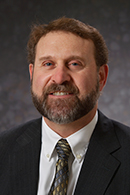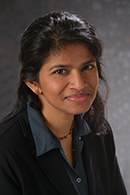News
2014 Technical Excellence Award Recipients
Dr. David O. Caplan
 For his outstanding technical contributions to optical communications; leadership in developing advanced high-sensitivity optical transceivers for terrestrial and space-based applications; and innovations in multi-rate signaling formats and flexible free-space laser communication architectures.
For his outstanding technical contributions to optical communications; leadership in developing advanced high-sensitivity optical transceivers for terrestrial and space-based applications; and innovations in multi-rate signaling formats and flexible free-space laser communication architectures.
Dr. David O. Caplan is a Senior Staff member in the Optical Communications Technology Group. Since joining Lincoln Laboratory in 1996, he has conducted research on high-sensitivity laser communication systems and related technologies, with an emphasis on photon- and power-efficient transmitter and receiver design. He led the development of transmitter systems for the Geosynchronous Lightweight Integrated Technology Experiment (GeoLITE), a demonstration of the world's first successful high-rate space-based laser communication system.
His pioneering work on high-sensitivity multi-rate optical transceivers has been incorporated into several large programs at the Laboratory and into the National Aeronautics and Space Administration's deep-space interplanetary laser communication initiatives, including the Mars Laser Communications Demonstration, the subsequent Lunar Laser Communication Demonstration (LLCD), and the ongoing Laser Communications Relay Demonstration. He designed and oversaw the buildup of the uplink transmitter systems for the LLCD program, which increased data transmission rates to the Moon by more than three orders of magnitude and which received a 2014 R&D 100 Award. He is currently leading the development of integrated photonic transceivers with agile multi-rate and multiple-modulation-format capabilities.
Dr. Caplan has been active in the Optical Society (OSA) and Institute of Electrical and Electronics Engineers (IEEE). He was a guest editor for the IEEE Journal of Selected Topics in Quantum Electronics, served as a member of the technical program committees for the OSA Conference on Lasers and Electro-Optics (CLEO) and the IEEE Photonics Society, and chaired the CLEO Lightwave Communications and Optical Networks technology committee. He has lectured at various in-house courses, served as the cochair of the Laboratory's highly successful Networking and Communications Course for invited attendees, and chaired the Laboratory's New Technology Initiatives Board. His efforts toward enhancing students' education include advising MIT graduate students, instructing an MIT Independent Activities Period course on laser communications, judging high-school science competitions, and organizing several outreach events, such as Daughters and Sons Days demonstrations and Science on Saturday presentations on lasers and optics.
Dr. Caplan graduated summa cum laude from Tufts University with a bachelor's degree in electrical engineering and earned master's and doctoral degrees at Northwestern University in electrical engineering with a focus on nonlinear and quantum optics. His work in the field has led to more than 80 publications, including ten issued patents and two book chapters.
Dr. Vyshnavi Suntharalingam
 For her deep technical knowledge of
and contributions to the field of advanced imaging technology; creativity in developing silicon-based imagers, innovative charge-coupled devices, and active pixel sensors; and leadership of projects in imager design and fabrication that have had significant impact on Laboratory systems.
For her deep technical knowledge of
and contributions to the field of advanced imaging technology; creativity in developing silicon-based imagers, innovative charge-coupled devices, and active pixel sensors; and leadership of projects in imager design and fabrication that have had significant impact on Laboratory systems.
Dr. Vyshnavi Suntharalingam, a Senior Staff member in the Advanced Imager Technology Group, directs programs to develop sensors for unique imaging problems. Currently, she leads the charge-coupled device (CCD) development for the Transiting Exoplanet Survey Satellite and develops new designs, such as the digital CCD and shortwave infrared germanium CCDs.
In 1996, Dr. Suntharalingam joined a Lincoln Laboratory team that was extending complementary metal-oxide semiconductor (CMOS) circuit technology to 25 nm gate length dimensions. The first project she led addressed the specialized voltages needed for controlling conventional CCDs. She later led the Mosaic program team, which was developing global snapshot, zero seam loss, digital imaging tiles. Mosaic demonstrated a smart sensor approach that established Lincoln Laboratory's reputation in three-dimensional integrated circuit imaging technology. In 2009, she began architecting the device design and 200 mm wafer fabrication of large-format front- and back-illuminated CCD imagers. She has initiated and developed many programs in CCDs, avalanche photodiodes, and active pixel sensors.
Dr. Suntharalingam has served in various leadership positions at Lincoln Laboratory. In 2000, she was appointed an assistant leader of the Advanced Silicon Technology Group; in 2010, she became leader of the Advanced Imaging Technology Group; and she has been a Senior Staff member from 2005 to 2010 and again from 2014 to the present. She has participated on the New Technologies Initiatives Board, the Optical Systems and Technologies Line Panel, and the Library Advisory Committee. She was a founding member of the Lincoln Laboratory Technical Women's Network.
Throughout her career, Dr. Suntharalingam has been active in professional and educational activities. In 2008, she was the short-course chair for the IEEE International SOI Conference, and since 2009, she has served on organizing committees for the Scientific Detector and International Image Sensor Workshops. She is a manuscript reviewer for the IEEE Electron Devices Society, has authored or presented more than 40 papers, and is an inventor on patents in CCDs and thin-film field-effect transistors. She has advised co-op students and interns, developed internal lectures, and coaches Laboratory-sponsored FIRST (For Inspiration and Recognition of Science and Technology) LEGO League teams.
She hold a bachelor's degree in electrical engineering from Yale University and a doctoral degree in engineering science and mechanics from Pennsylvania State University.